Four Least Terns arrived on our lake on April 5th, apparently three males and one female. One of the males was in the early courtship stage, posturing before the female and bringing her fish, which she at first refused.
The pair engaged in recognition displays. I expected that soon they would be in full courtship mode, with the male offering gifts of small fish.


The male and female plumage is very similar. During breeding season, the larger males are said to have brighter orange-yellow bills, legs and feet, though this is not always noticeable. Note that the male, on the left, is a bit larger and has a brighter yellow bill than the female.
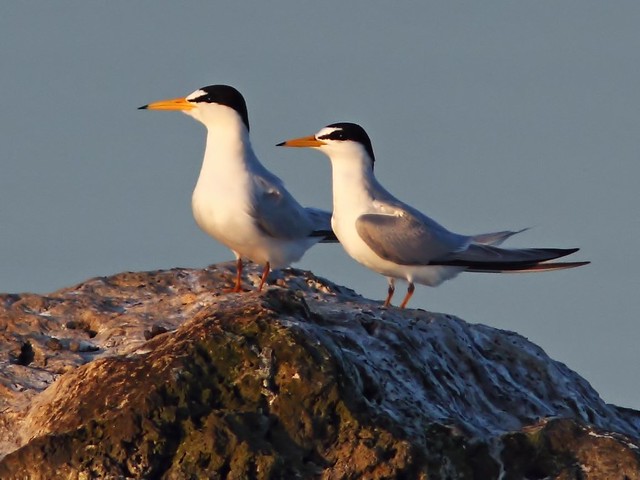
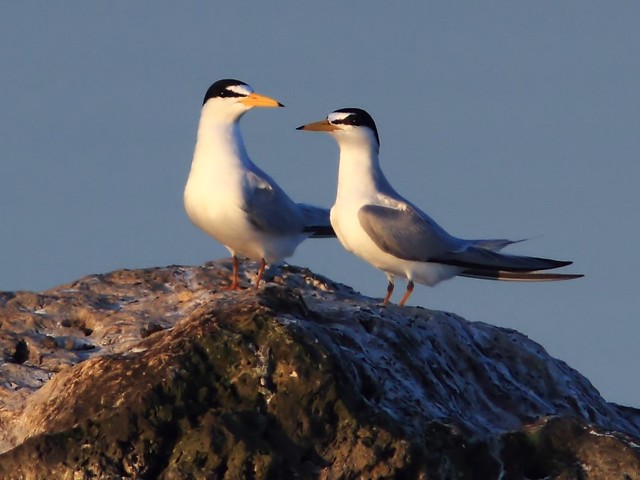
This video, "A Tern is Spurned," documents his failure as a suitor. It is best viewed full-screen (If the video fails to load, visit this link.)
Most mornings I watched the terns' behavior from the shade of this little tree at the end of a peninsula, very near the rocks where they like to roost.
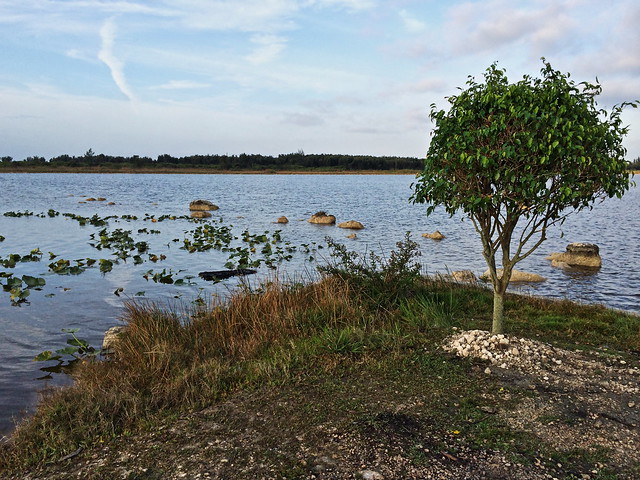
Although it was impossible to identify the individual males, the bonded couple appeared to stay together and they chased off the other males if they tried to roost with them.
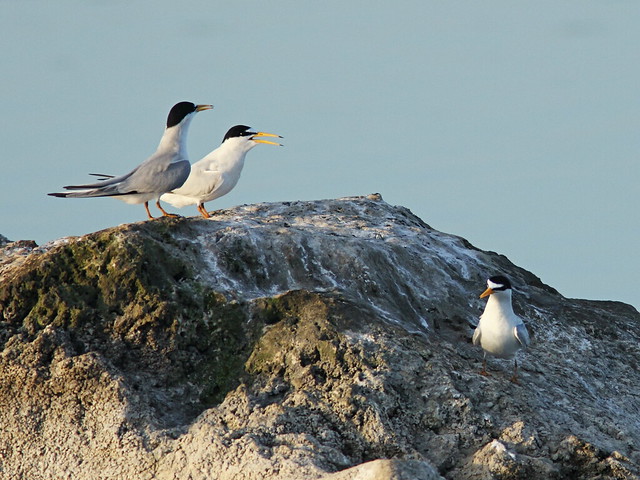
The calm was disturbed when one of the unpaired males flew in and began a bill-up display. The established male blocked the interloper and then chased him away.
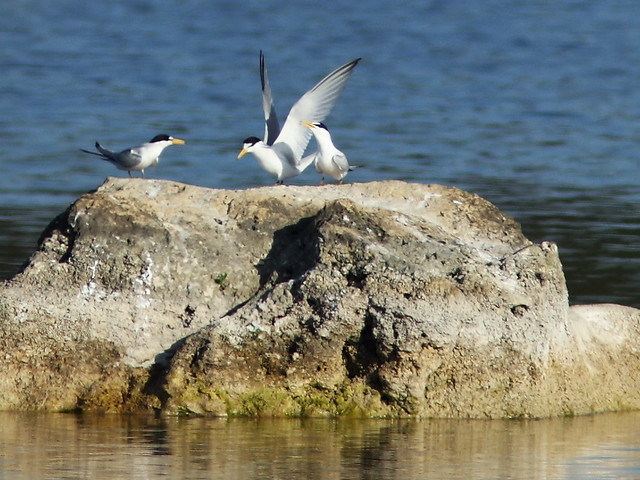
The unwelcome third tern kept an eye on the pair from a nearby rock.
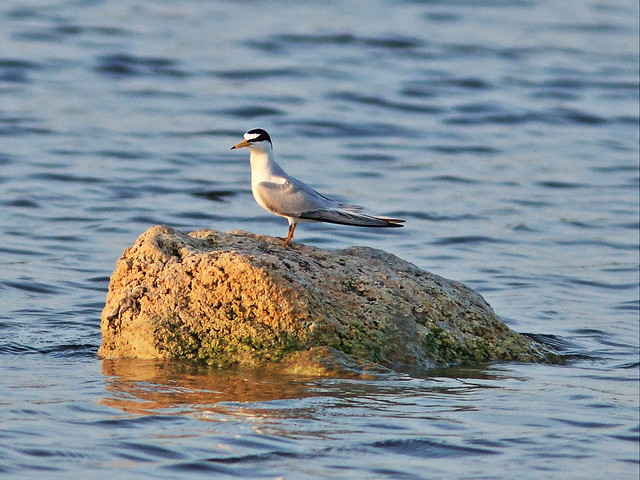
First one, and then the other male disappeared, and on April 15th and 16th, only one male and female remained. Presumably, the male was the "Spurned Tern." Having failed in his attempts at ceremonial courtship, the male tried a new tack-- he would impress his prospective mate with his fishing prowess. The couple was already on the lake when I arrived before sunrise on April 16th. In the semi-darkness I photographed the male hovering and diving for fish. (Taken at f/5.6 1/640 sec at ISO 1000).
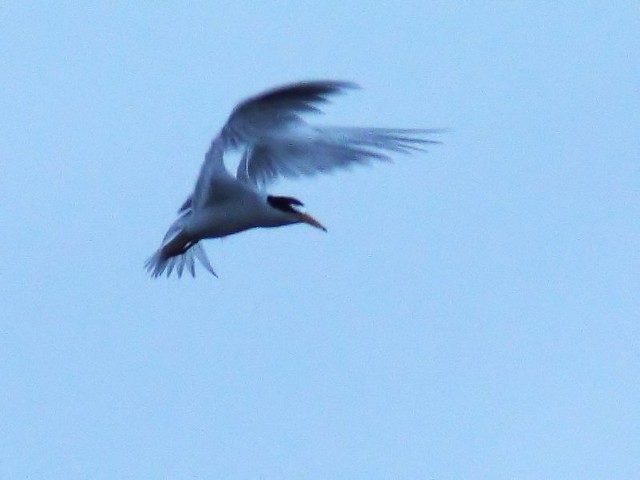
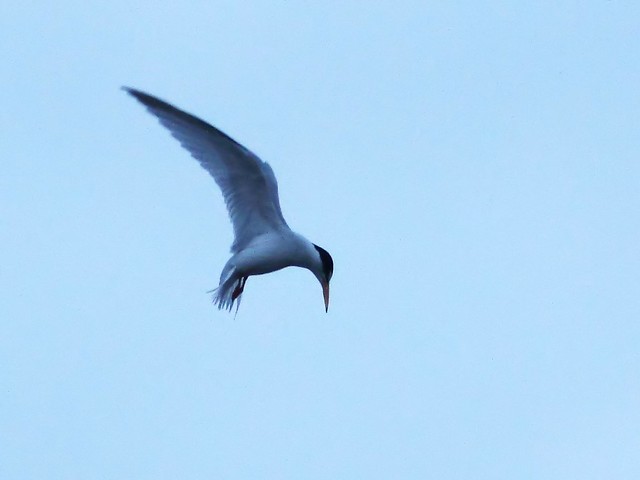

He succeeded and brought home an actively wiggling minnow.
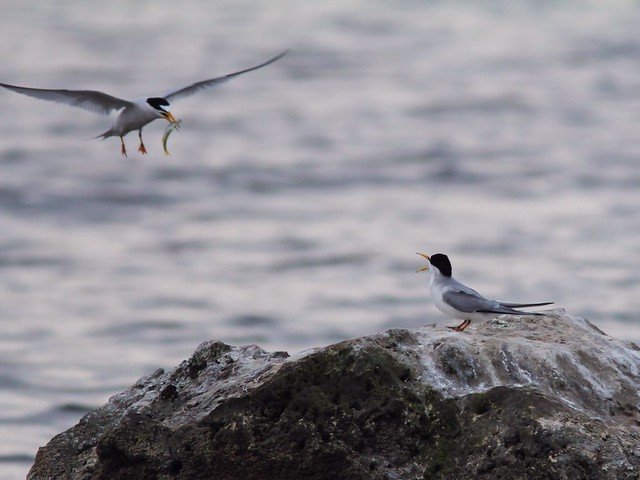
Dispensing with the feeding ritual, he simply dropped the struggling fish, missed the the female's waiting jaws and quickly flew off, not noticing that she failed to acquire a proper hold.
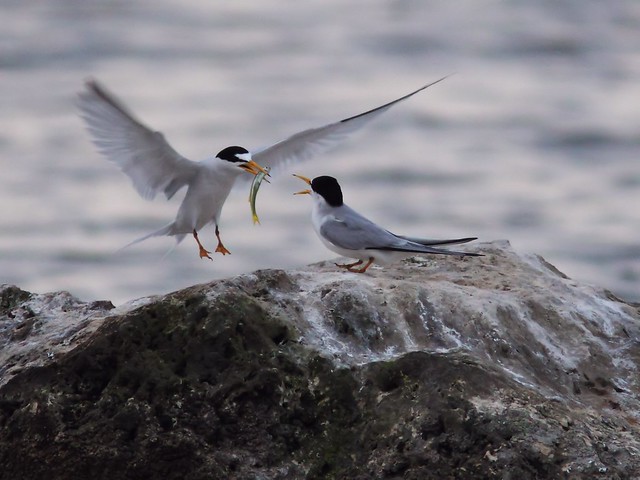
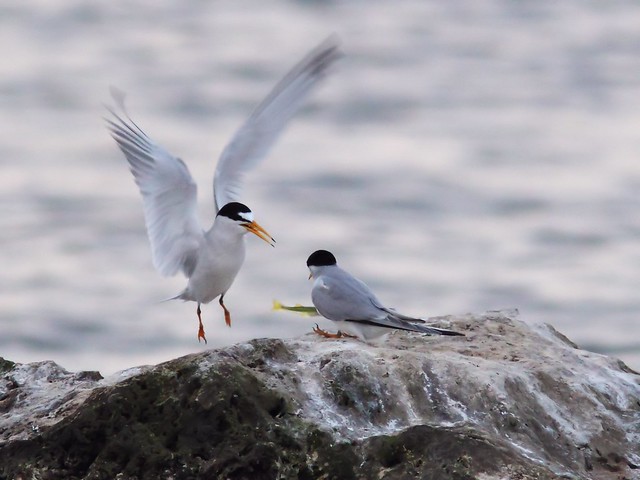
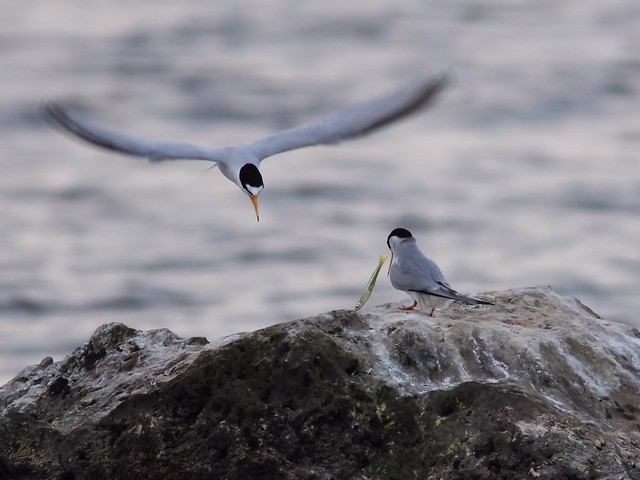

The minnow slipped out of her bill and she tried to retrieve it, but the little fish escaped back into the water.
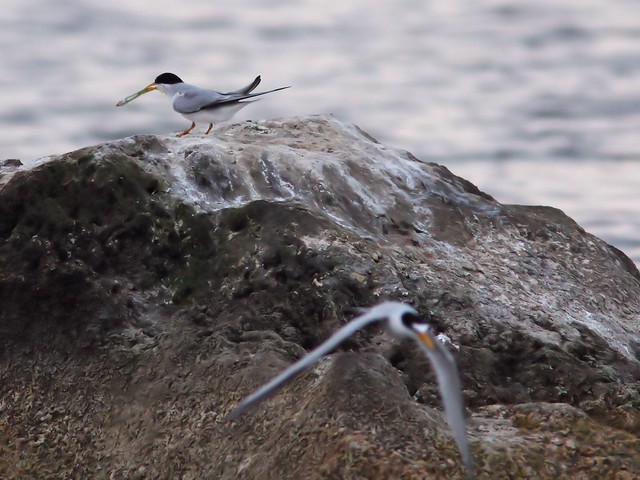
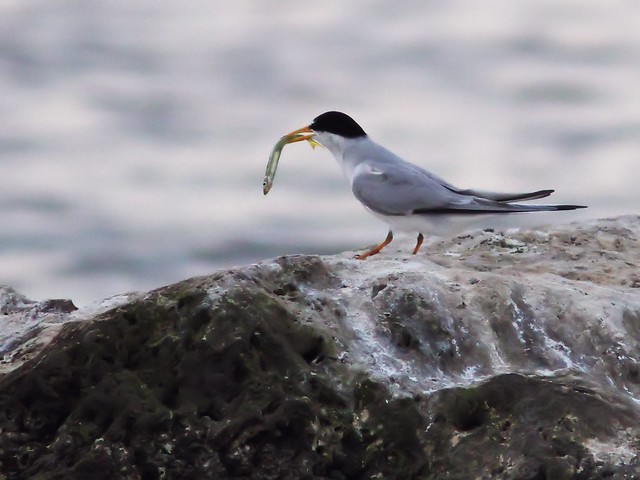

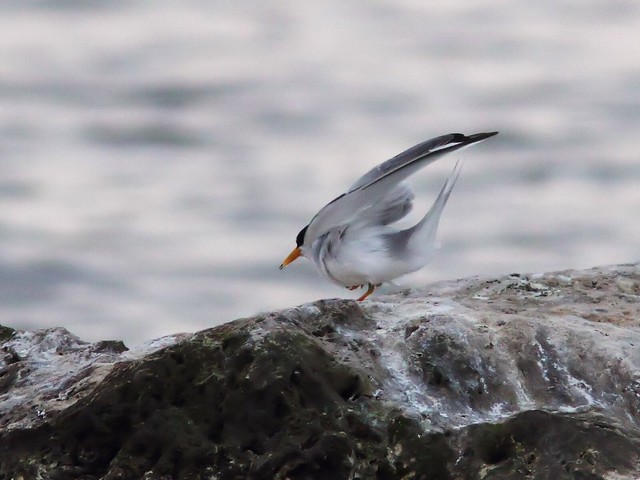
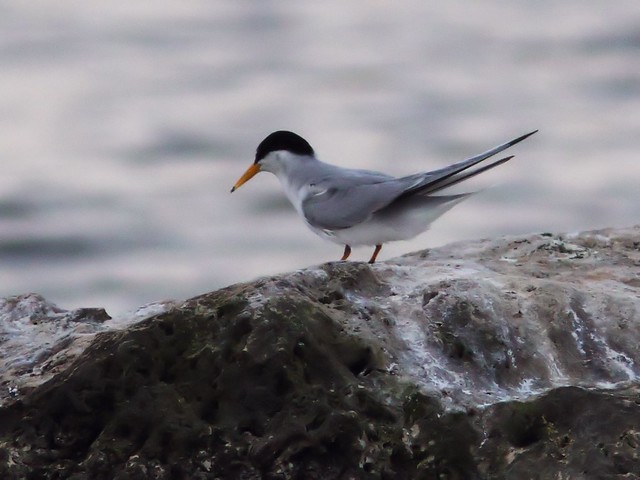
There are three distinct populations (subspecies) of Least Terns in the US. One group nests in limited areas on the beaches of western Mexico and California. A second finds sandy places to nest along rivers and streams in the mid-west. Both of these populations are of particular conservation concern. With protection of its nesting areas, the endangered California population has increased from less than 600 pairs in 1974 to over 4500 pairs, while the interior subspecies have increased to 7,000 pairs from a low of 1,000 pairs in 1985 .
Our Florida birds belong to the third subspecies, which breeds up and down the entire US Atlantic coast, wintering in the Caribbean and along the east coast of Central and northern South America. All three populations face threats from human activities, notably destruction of beaches and loss of beach and stream-side habitat. Plume hunters took a huge toll in the late 1800s-- I have seen photos of ladies' dainty hats adorned with the whole bodies of one or more Least Terns. Though not on the Endangered Species list, the U.S. Fish and Wildlife Service lists the east coast Least Terns as a Species of Management Concern. Their swift erratic flight makes it difficult to photograph a Least Tern in flight.
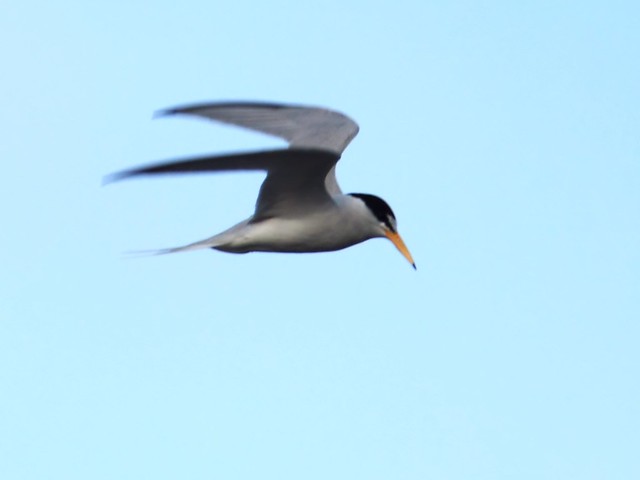
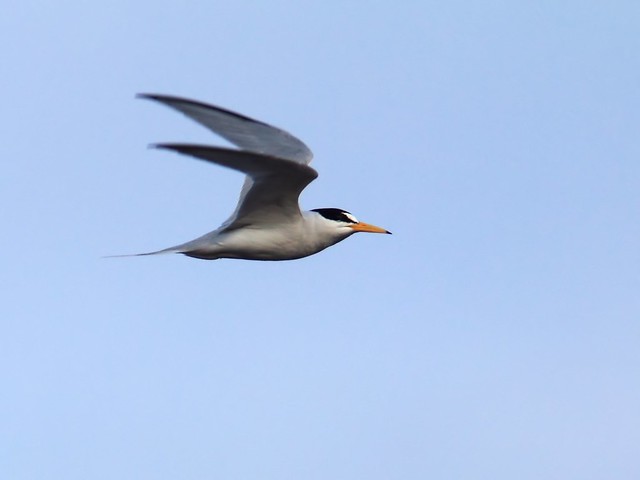
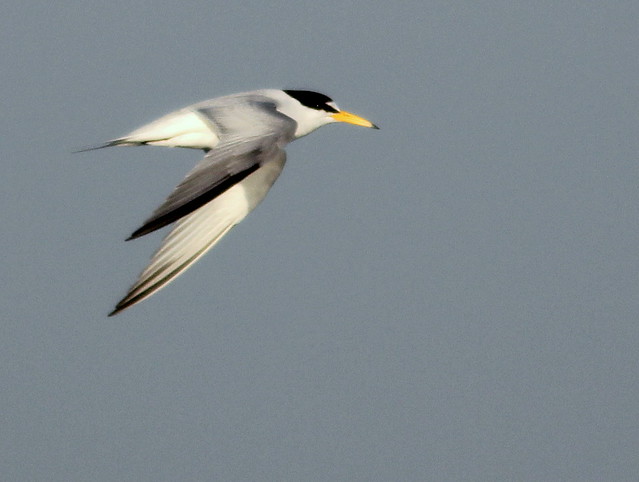
Once bonded, the pair stays loyal to each other for the entire breeding season. The male must prove his prowess as a provider by catching fish and offering it to his intended mate.
Following the age-old Least Tern courtship ritual, the female waits patiently while her suitor hunts for a small fish. When he catches one, he calls excitedly and flies toward the female's position, sometimes adding a dramatic flourish by swooping past her. The female eagerly awaits his arrival, calling back and begging. I captured the courtship ritual during the spring of 2013 in this video, best if viewed full-screen . (If the video fails to display, click on this link).
I am quite sure that Least Terns have nested on the gravel roofs of an elementary school and a strip mall in our neighborhood. Young terns are precocious and are able to walk about soon after hatching, but they remain dependent upon their parents until they move south in late summer.
In late summer, 2012 I watched these two immature terns as they were being trained to fish by their parents. The adults would catch a fish and make their youngsters chase after them. The adults would then drop the fish in the water and fly down as if to get to it before the "trainees." If not retrieved, the parents would pick up the fish and try all over again. Note that the white area on the forehead of the adult, to the left in this photo, is enlarging. After breeding the adults' bills and feet also become darker.

Least Tern immature in flight, July 27, 2011.

First-year birds may remain on their wintering grounds through the next breeding season.
Great post on the Terns! They are one of my favorite birds to see at the shore.. Awesome photos. Enjoy your weekend , happy Easter!
ReplyDeletethey're really beautiful! loved the series on the minnow 'catch and release'. :)
ReplyDeleteKen ... Superb post and photos to match. Thanks for sharing the lives of the Least Terns.
ReplyDeleteWonderful!! Simply wonderful!
ReplyDeleteI can't say that I have a favorite this week....but the flight images and feeding images are so special.
They're all super!!
Wonderful photos of the Terns! Enjoyed the video. Very educational post. Thanks!
ReplyDeleteThey're gorgeous birds. You got awesome photos of them. Happy Easter!
ReplyDeleteFabulous shots of the terns; especially the ones with the silver fish. Hope you had a blessed Easter!
ReplyDeleteThose were amazing videos Ken -- and a wonderful series of still photos too... thanks for teaching me so much about least terns. I had noticed before when they have their heads up like that, but didn't know why ... or any of the other information. Great post.
ReplyDeletewonderful images and video of the terns. I especially enjoyed the first set of mages. Love the soft light in them.
ReplyDelete